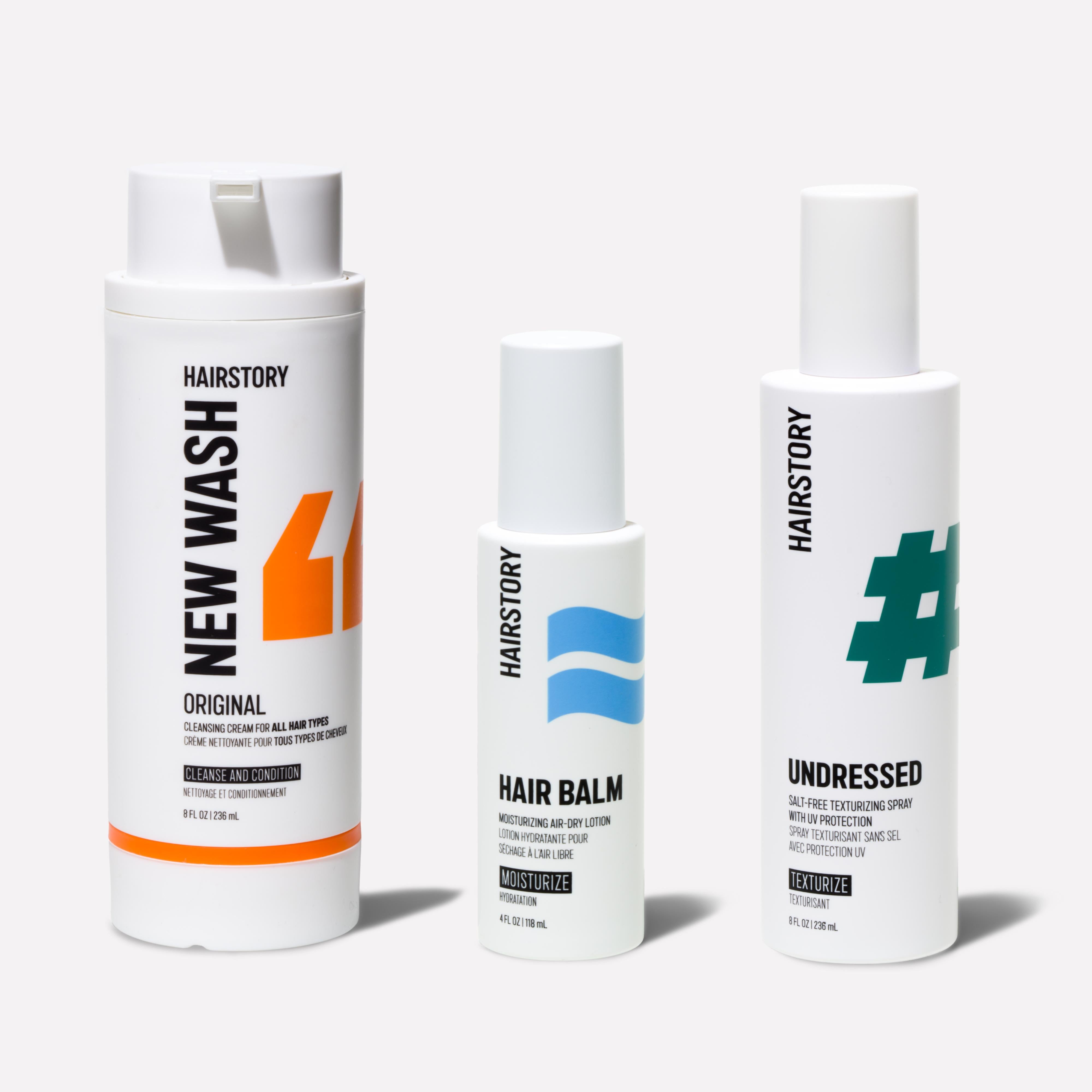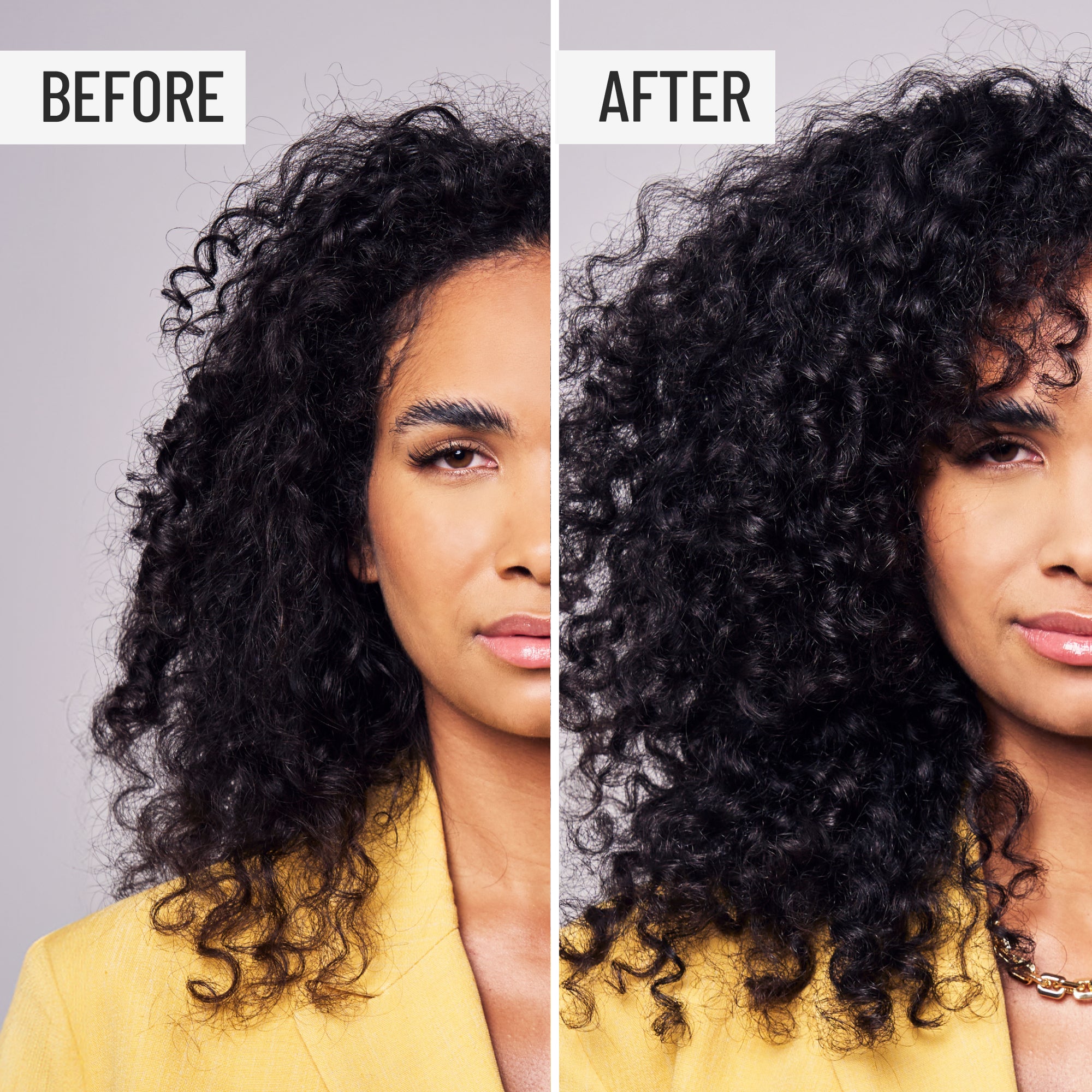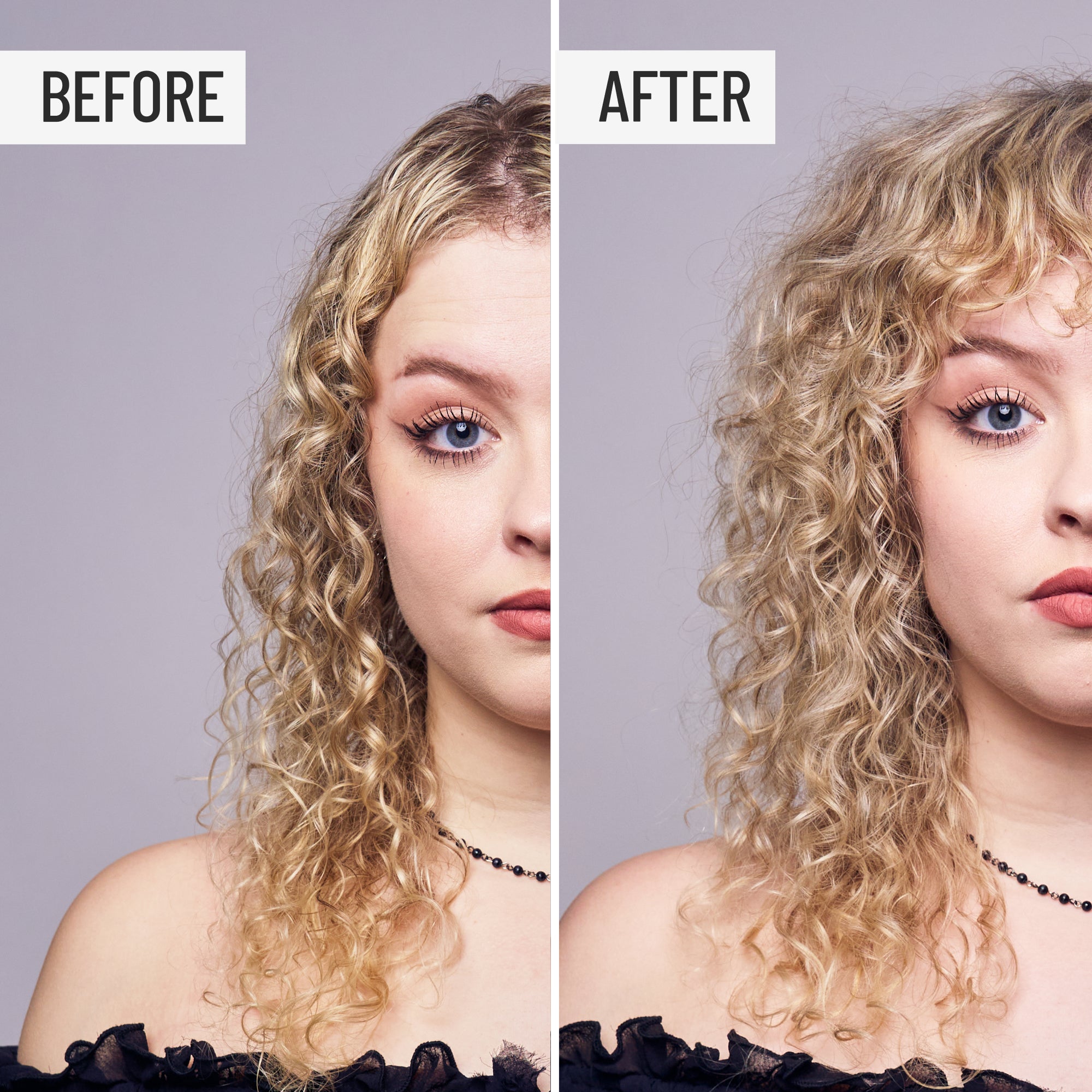Heat does magic things to hair. It bends it to our will, whips it into shape, and irons out its kinks. It also does horrific things to hair – which you know about or you wouldn’t be searching for ways to have your hair and heat it too. Whether you blow it dry, iron it smooth, or wind it around a curling wand, you’ve come to the right place: Your safety is our utmost concern.
Style like a pro: Choose professional grade appliances.
One heat setting does not fit all: Find tools with adjustable temperature settings.
Know your limit: Try not to heat style more than twice a week.
Wear protection: Use a thermal protecting lotion that offers some hold.
Work quickly: Limit contact and minimize exposure.
Pull the plug: Cool it at the first signs of chronic dryness or split ends.
Heat tools are cool – until you get burned.
Keep heat settings under 400°F, more than enough for any style. Fine or damaged hair requires the lowest heat setting. The thicker and stronger your hair, the higher the temperature can be. It’s better to use a cooler tool longer (a few seconds per section) than a hotter one to save time. If you hear sizzling or smell burning when you touch an iron to your hair, your tool is far too hot!
THE BLOW DRYER
Some of would be ‘blowin’ in the wind’ year-round if we could. Others ‘rock the socket’ daily and have a blow-dryer stashed in their disaster survival go-bag. Either way – and especially if you’re in the latter category – take every precaution not to get bone-dry when blow-drying:
• Attachments: Choose a dryer with both a nozzle attachment to focus and force airflow and a diffuser to spread and soften it.
• Rough Dry: Air dry 80% of the way first. If you’re in a rush, ‘rough dry’ holding the dryer far from your head at low heat.
• Keep your distance: Hold the dryer no less than 6” away from hair.
• Go with the grain: Always direct air along the shaft, or downward from roots toward ends so you don’t ruffle the cuticles.
• Don’t boil it. A condition known as ‘bubble hair’ occurs when water trapped in hair is heated and turns to steam, causing bubbles on the shaft, breakage, and split ends.
• Keep it moving: Never focus heat on one area, especially older and naturally drier ends.
• Sleep on it: Preserve your blowout with extra-large foam rollers. Separate hair into six to eight large sections, and wrap each before bed to protect the style and keep the cuticle from fuzzing overnight.
THE CURLING WAND
The hair is always curlier on the other side of the fence; we seem to want what we don’t have. It is possible to curl (or ‘tong’ as the pros say) without getting burned. First, learn the basics so you can zip through it to limit the time your hair has to take the heat.
• Size matters: The diameter of the barrel dictates the kind of curl: An inch or an inch-and-a-quarter is pretty standard.
• Around it goes: If you want springy curls that bend several times, make sure hair wraps around the barrel at least 3 times. If you want a little flip and soft waves, wrap once to twice.
• Sections: Work with horizontal sections to create volume, vertical sections to accentuate length.
• Va-va volume: To lift roots, position the barrel close to the root and wrap hair around it from there. The minute you move the barrel downward, you’re collapsing any volume.
• Spiral effect: For more waves with a more natural look, twist hair while you wind it.
• Watch your fingers: Consider investing in heat gloves to protect them. The pros even use them to run their fingers along the hot barrel to smooth ends.
Follow the same safety tips as you would when using...
THE FLAT IRON
How often you can safely flat iron? It depends a great deal on the condition your hair is in. If it’s excessively dry, under-conditioned, or damaged, flat-ironing won’t help, and will likely hurt. Most plates these days are coated with a substance to make them less risky:
Ceramic conducts heat very efficiently and reduces static electricity without harming fragile or damaged hair.
Tourmaline offers even heat distribution along the hair shaft and protects your hair from future damage.
Titanium begins sealing your hair shaft the first time you use it, adding shine, hold, and manageability.
• Know when to retire your iron: When plates get scratched, it’s time for a new one to keep hair protected and the result smooth.
• Be careful at the hairline: Session stylist Brian Casey swears he can tell how long a model’s career has been by how far their hairline has receded (!) by breakage due to overheating and too-tight ponytails.
• Blow-dry hair straight before ironing: And use your products in this step to avoid wetting hair down again and to make ironing smoother.
• Use a light hold hairspray: Spritz some on a brush after ironing – NEVER before – as it can cause dryness, especially if you are bleached blonde, as applying heat directly to hairspray can result in hot-pink patches.
ROLLERS
There’s a debate amongst the roller set about hot versus steam, but both sides agree that both are kinder to hair than irons, and perfect for ‘Breck Girl,’ Veronica Lake waves. Steam rollers use moisture to lock in curls, while hot rollers use dry heat. The benefit of steam comes from the moisture: as the steam cools, it evaporates and moisturizes the hair, leaving it soft and shiny. Steam roller sets tend to last longer than hot roller sets, and they prevent static.
Hot rollers are faster to use, but you do have to wait for steam rollers to dry before taking them out. In either case, start with dry hair. If you have naturally curly or kinky hair, hot rollers will loosen and soften your curls; start with a blow-out for better definition.
• For more curl: Start rolling at the ends and up toward the scalp.
• For more volume: Place rollers a few inches from the roots and then wrap hair around the roller.
• Wind your ends last: Cut down on damage by keeping them on the outer layer; leave them out altogether for a more modern vibe.
• Too wound up: Too much tension causes breakage and fallout.
• Cool down: Wait about 20 minutes before unraveling and raking with fingers or brushing out.
PRODUCTS
Using a heat protectant religiously is crucial, but don’t assume it’s a get-out-of-damage-free card. Use all precautions, always. Choose a product that contains copolymers, proteins, and essential oils – to both insulate hair from heat and prevent moisture loss – such as Hairstory Dressed Up.
Remember that moisturizers can help mask the appearance of heat damage and make it feel a lot better, but they cannot actually repair it. Try a leave-in conditioning product like Hairstory Hair Balm and think of it as a skin creme for your hair. It’s also a great way to prevent static.
If you use oils as a substitute for silicones such as Argan oil or Shea butter, make sure to apply a leave-in conditioner or moisturizer as well, such as Hair Balm; a pure oil alone will likely leave you dry and fragile.
To preserve your style longer between washing, use a dry shampoo such as Hairstory Powder to absorb any oiliness (and give your volume a boost).
Styling Tips from the Experts
Wes Sharpton’s advice: Plan ahead. A great way to maximize your time styling and save your hair from overexposure to heat, think about how your ’do might evolve over a series of days: For example, create a perfect curling iron set on day 1 with a setting lotion, but let it settle into looser waves for day 2 with a texturizing spray. Create a messier texture with some powder for day 3.
Brian Casey insists you allow hair to cool to help style last longer before brushing out or finger-styling. That’s what the “cool-shot” feature on blow-dryers is designed for. Pin curls up after blow-drying or curling as long as you can.
Brian also recommends the versatility of a sock diffuser over hard diffusers as more effective, lighter to handle, and give you the ability to hold it close to hair, even touching. But keep it moving.
Avoid "Wet-2-straight/Dry" appliances to avoid boiling and damaging hair (see the blow-dryer section above).
If your hair is simply too fried to take any more heat, there’s a long tradition of setting curls with rags, pipe-cleaners or silk scarves. And they’re all soft enough to sleep in for overnight setting.
Finally, A little professional help never hurts. Ask your hairdresser to go over how to style your hair, even if you’ve done it yourself for years.































